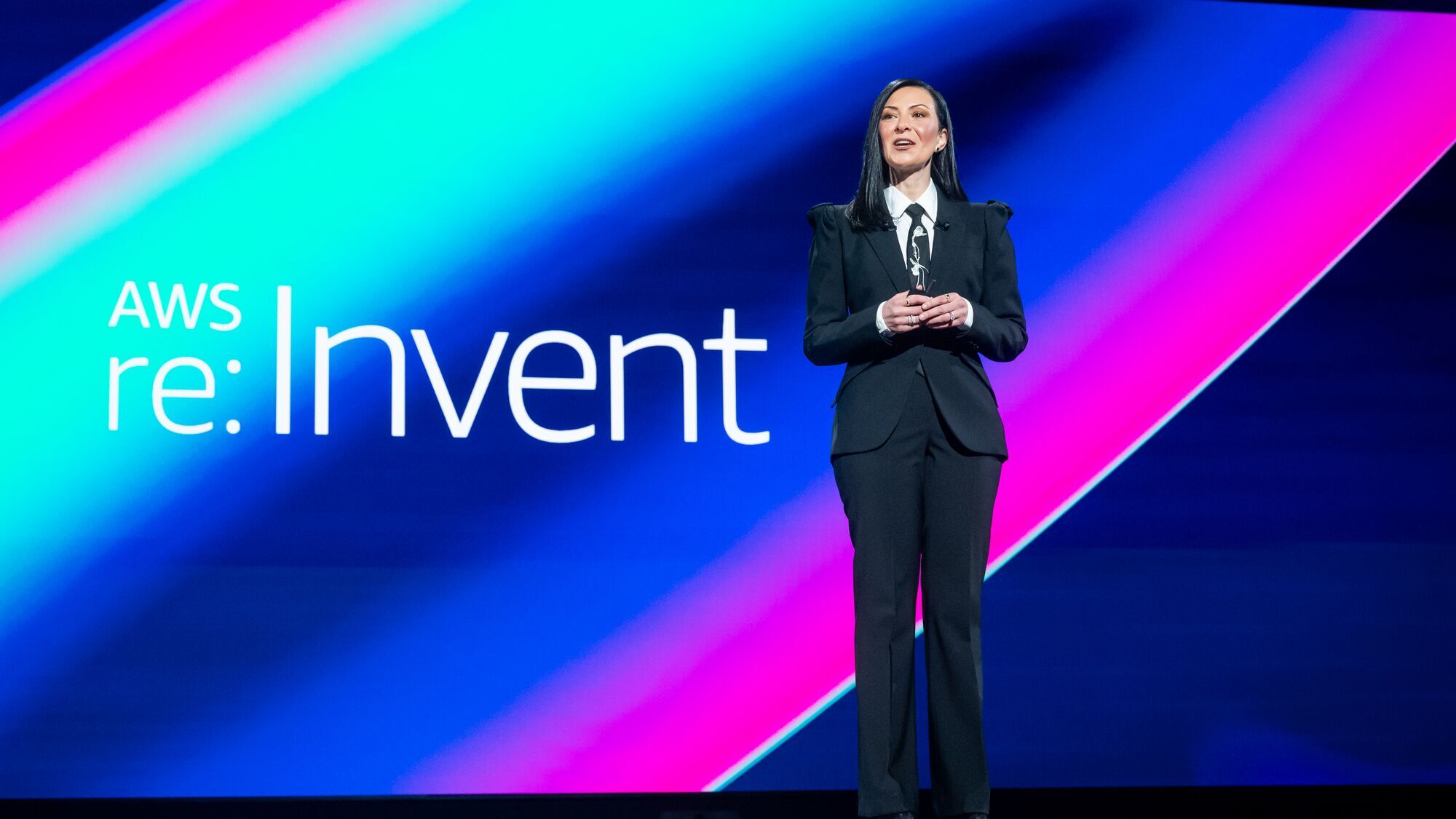December 6, 2024 10:01 AM
That’s a wrap on AWS re:Invent 2024
That's a wrap on AWS re:Invent 2024 in Las Vegas, Nevada. Generative AI was again a major focus, with Amazon Web Services (AWS) CEO Matt Garman, AWS Vice President of Data and AI Swami Sivasubramanian, and special guest Amazon CEO Andy Jassy announcing a range of innovations, as well as sharing behind-the-scenes-insights. Announcements included Amazon Nova foundation models, availability of Trainium2 instances, the launch of Trainium3, new capabilities for Amazon Q, and more.
December 5, 2024 4:16 PM
Canva, Too Good To Go reveal how AWS enabled global expansion
Two AWS customers took to the re:Invent stage Thursday morning with Amazon CTO Dr. Werner Vogels, sharing how AWS helped them on their journeys in managing complexity.
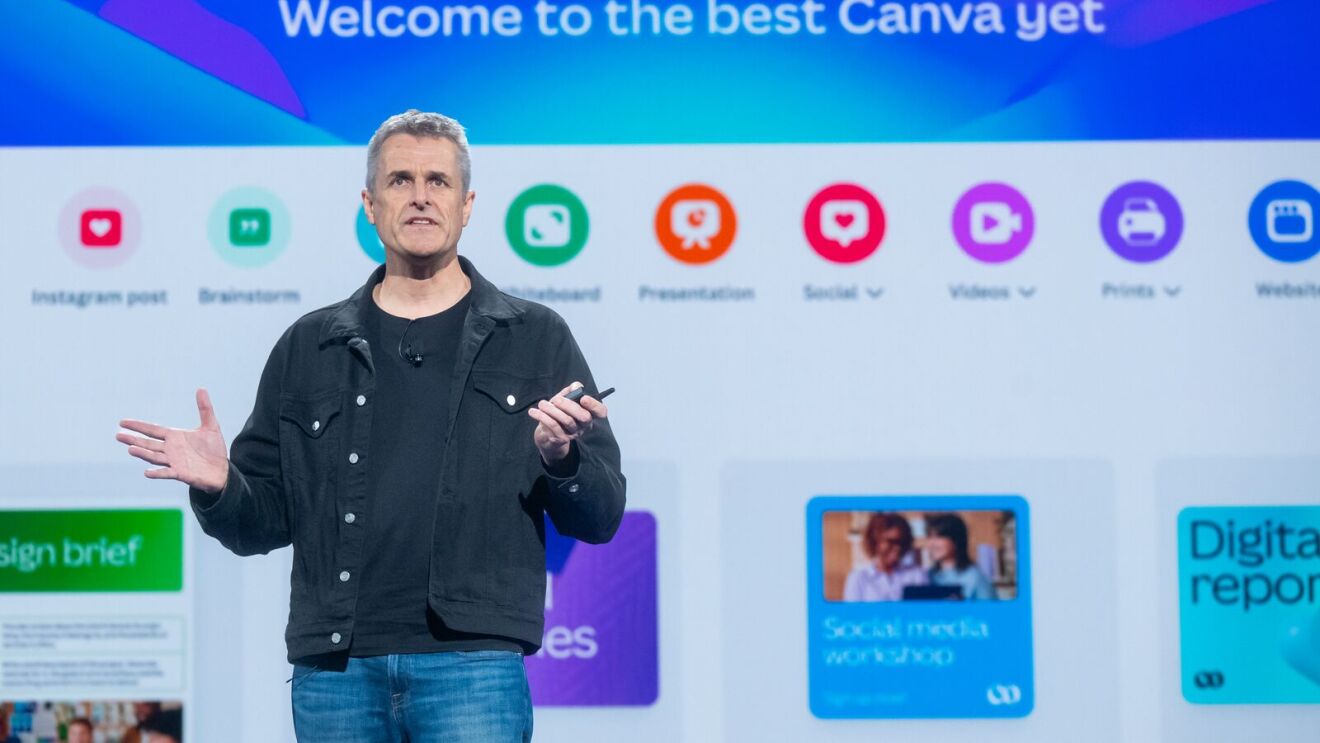 Brendan Humphreys, CTO, Canva
Brendan Humphreys, CTO, CanvaHow AWS powers 450 Canva designs per second
Brendan Humphreys, CTO of Canva, highlighted how AWS has been instrumental in the company’s growth. Founded just over a decade ago, Canva has become a global design powerhouse, boasting over 220 million users across 190 countries. Today, the platform handles 1.2 million requests a day and sees 450 new designs created every second. Humphreys revealed how Canva’s architecture evolved from a simple monolith running on EC2, to a sophisticated microservices architecture. AWS services like Amazon RDS MySQL and later Amazon DynamoDB enabled Canva to scale seamlessly.
Brendan Humphreys, CTO of Canva, highlighted how AWS has been instrumental in the company’s growth. Founded just over a decade ago, Canva has become a global design powerhouse, boasting over 220 million users across 190 countries. Today, the platform handles 1.2 million requests a day and sees 450 new designs created every second. Humphreys revealed how Canva’s architecture evolved from a simple monolith running on EC2, to a sophisticated microservices architecture. AWS services like Amazon RDS MySQL and later Amazon DynamoDB enabled Canva to scale seamlessly.
Humphreys also highlighted how AWS is enabling Canva to build a thriving ecosystem for developers. With tools like Apps SDK for building embedded functionality within Canva, and the Connect API for integrating Canva’s capabilities into other platforms, Canva has fostered a thriving marketplace with over 300 apps created by thousands of developers.
How AWS helps Too Good To Go save four meals per second
Robert Christiansen, VP of Engineering at Too Good To Go, the world’s largest marketplace for surplus food, explained how AWS enabled the company to scale from a simple idea to a platform with over 100 million users worldwide. As Too Good To Go grew rapidly, AWS provided crucial solutions to keep its operations running smoothly. AWS’s global infrastructure allowed for seamless expansion into new markets like North America and Australia without building separate apps or infrastructure for each region.
Robert Christiansen, VP of Engineering at Too Good To Go, the world’s largest marketplace for surplus food, explained how AWS enabled the company to scale from a simple idea to a platform with over 100 million users worldwide. As Too Good To Go grew rapidly, AWS provided crucial solutions to keep its operations running smoothly. AWS’s global infrastructure allowed for seamless expansion into new markets like North America and Australia without building separate apps or infrastructure for each region.
With AWS services like Amazon SNS Topics and SQS queues, the company can efficiently spread updates across different regions, ensuring a consistent experience for users whether they’re in Copenhagen or Cleveland. This cloud-powered efficiency translates directly to impact: Too Good To Go saves four meals per second, chipping away at the 40% of food produced that’s currently being wasted every year. It’s a powerful example of how cloud technology can support not just business growth but also critical environmental initiatives.
December 5, 2024 3:30 PM
Scale your impact with the Now Go Build CTO Fellowship
Closing his AWS re:Invent keynote Thursday, Amazon CTO Werner Vogels said it was technologists’ responsibility “to help solve some of the world’s hardest problems.”
It’s why, last year, he set up the Now Go Build CTO Fellowship in collaboration with AI for Changemakers led by Tech To The Rescue and the AWS Social Responsibility and Impact team, aimed at CTOs and senior engineering leaders whose organizations are driving positive change through AI and cloud technology.
This fellowship is tailored for aspiring tech leaders in nonprofits and social impact organizations—providing fellows with training, mentorship, and access to AWS experts to accelerate their growth and the development of tech solutions that can make a profound difference in areas such as disaster management, climate, health and beyond.
It’s not just about sharpening technical skills; it’s about expanding your leadership abilities, scaling your impact, and being part of a community that’s redefining how technology can change the world. For more information and how to apply, visit Vogels’ blog.
December 5, 2024 2:45 PM
Amazon CTO shares his 6 tips for managing complexity
Amazon CTO Dr Werner Vogels looked back on his 20-year career at the company during his re:Invent keynote Thursday, and reflected on how AWS has continued to innovate to solve complex problems for customers.
Complexity “sneaks in” all the time, said Vogels. It’s inevitable as systems become more complicated, and in general complexity is a good thing, because it probably means you’re adding more functionality. The key to dealing with it is how you manage it.
Vogels shared his 6 lessons with the re:Invent audience for dealing with complexity, or rather lessons in “simplexity” that he’s learned at Amazon over the year.
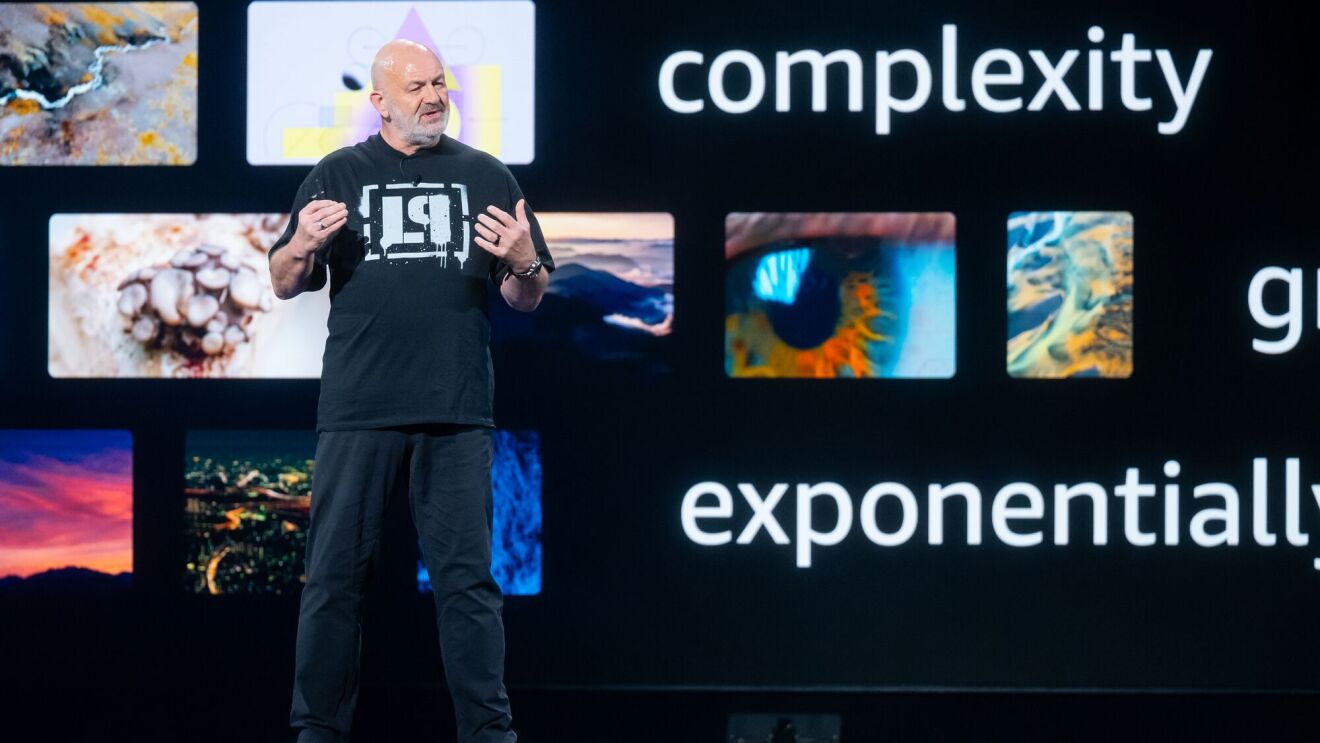 Amazon Chief Technology Officer Dr. Werner Vogels
Amazon Chief Technology Officer Dr. Werner Vogels1. Make evolvability a requirement
Your systems will grow, and you will need to revisit the architecture choices you’ve made. Vogels told the audience that when the team started building Amazon Simple Storage S3 “we knew we wouldn’t be using same architecture in a year from now.” Constructing architecture that can evolve in a controllable way is crucial in order to have the ability to easily accommodate future changes. Evolvability differs from maintainability, he pointed out. Evolvability is long-term strategy to deal with complexity over time, while maintainability is about making sure the system is working properly in the short term. With Amazon S3, he said, AWS has continued adding new functionality without any impact for customers—never compromising on the core attributes while moving customers along the way without them even noticing.
2. Break complexity into pieces
Vogels said Amazon CloudWatch (a service that monitors AWS applications, responds to performance changes, optimizes resource use, and provides insights into operational health) is a great example of how AWS has taken a massive service and disaggregated it into smaller building blocks that can evolve over time. As the system started to grow, it took on a new level of complexity. By breaking it into a series of low coupled, smaller components, with high cohesion and well-defined APIs so they can easily talk to each other, AWS has been able to provide a very simple front-end service that’s been rewritten and rewritten over time to offer customers new features with no disruption.
3. Align organization to architecture
Andy Warfield, AWS vice president and distinguished engineer, joined Vogels on stage to explain lesson 3: how to align your organization to your architecture. Amazon S3 has been around for 18 years, he said, and although we’re still learning every day, but there are things we get right. As you build more and more complex systems, he said, you have to acknowledge that your organization usually gets at least as complex as the software you’re building. The first key to building successful teams is not being complacent. Even when things are going well, you still need to be looking out for what could go wrong, and keep asking questions. It’s this spirit of constructively challenging the status quo, “poking holes and finding stuff” that has helped the Amazon S3 team to succeed in its mission to provide durability for customers. The second, said Warfield, is to focus on ownership. Bring your teams a problem, and give them agency and the space to go solve it. It’s the leader’s job to give teams this agency, but maintain a sense of urgency to help them deliver on time.
4. Organize into cells
As you start to become more successful and things start to grow, any disturbance in operations can impact customers, said Vogels, and managing this can be highly complex. By decomposing services into cell-based architectures, you can isolate issues without impacting other units. Ideally, a cell should be so big that it can handle the biggest workload you can imagine, but also small enough to test at full scale. It’s always a balancing act, but ultimately it will help over time to maintain reliability and security for your customers, and reduce the scope of impact for your customers.
5. Design predictable systems
Build a system that’s highly predictable, said Vogels, and you will reduce the impact of uncertainty. An event-driven architecture can be valuable in dealing with this situation. Take Amazon Route 53, which provides highly available and scalable Domain Name System (DNS), domain name registration, and health-checking cloud services. Instead of continuously reconfiguring the DNS database, focusing on health-checking after requests are received makes the overall processing highly predictable.
6. Automate complexity
Many of the crucial tasks developers and engineers need to get done are often hard work, and just plain boring, said Vogels. But rather than ask “what should we automate?,” the right question, he said is “what don’t we automate?”. That’s why you should automate everything that doesn’t require high judgment. For example, customers can use Amazon Bedrock Serverless Agentic Workflows to create agentic ticket triage systems, where autonomous AI agents, specialized for well-defined use cases, can either resolve an issue themselves, or escalate to a human when necessary.
Ever since AWS began, he said, our mission has been to take on the burden of complexity for customers: we want to take on more and more of that for you, and we’ll continue to do everything we can to make the customer experience as simple as possible.
Vogels ended by urging the members of the audience to share their lessons with each other. He recognized the efforts of AWS Heroes, a worldwide group of AWS experts who go above and beyond to share knowledge and build community.
December 5, 2024 10:21 AM
5 tech predictions for 2025 and beyond, according to Amazon CTO Dr. Werner Vogels
From a new era of energy efficiency to a mission-driven tech workforce, Amazon’s CTO predicts what's coming in 2025.
- The workforce of tomorrow is mission-driven
- A new era of energy efficiency drives innovation
- Technology tips the scales in the discovery of truth
- Open data drives decentralized disaster preparedness
- Intention-driven consumer technology takes hold
December 4, 2024 5:41 PM
AWS unveils new partner innovations at re:Invent 2024
Dr. Ruba Borno, vice president, Global Specialists and Partners, AWS, announced innovations in cloud security and partner collaborations during her keynote at re:Invent Wednesday.
Borno announced the launch of four new security specializations, including the Security AI Category, so customers can identify partners with deep expertise in protecting AI applications and in defending against cyberattacks.
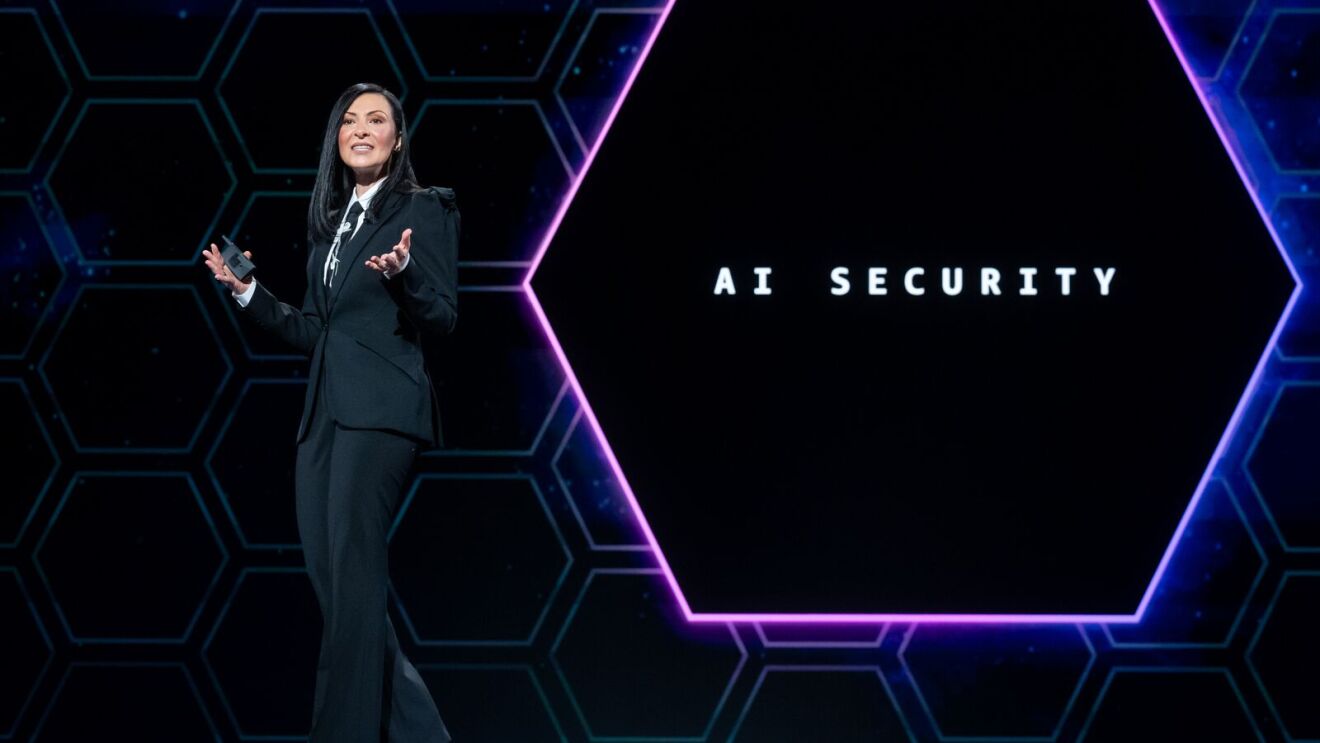 Dr. Ruba Borno, vice president, Global Specialists and Partners, AWS
Dr. Ruba Borno, vice president, Global Specialists and Partners, AWSBorno also announced that Buy with AWS is now generally available. This feature allows partners to integrate AWS Marketplace directly into their websites, enabling customers to discover solutions, request pricing, and make purchases using their AWS accounts.
She announced the preview of Partner Connections, a unified co-sell experience that simplifies deal structures across multiple partners on a single customer project. Additionally, Borno announced enhancements to the Migration Acceleration Program, including the removal of earnings caps on modernization deals.
On stage, several partners shared their latest collaborations, powered by AWS. Leaders from Wiz, a cloud security platform, and AWS partner Ahead discussed their experience with customer TurnItIn, an online plagiarism checker, in leveraging speed while prioritizing security.
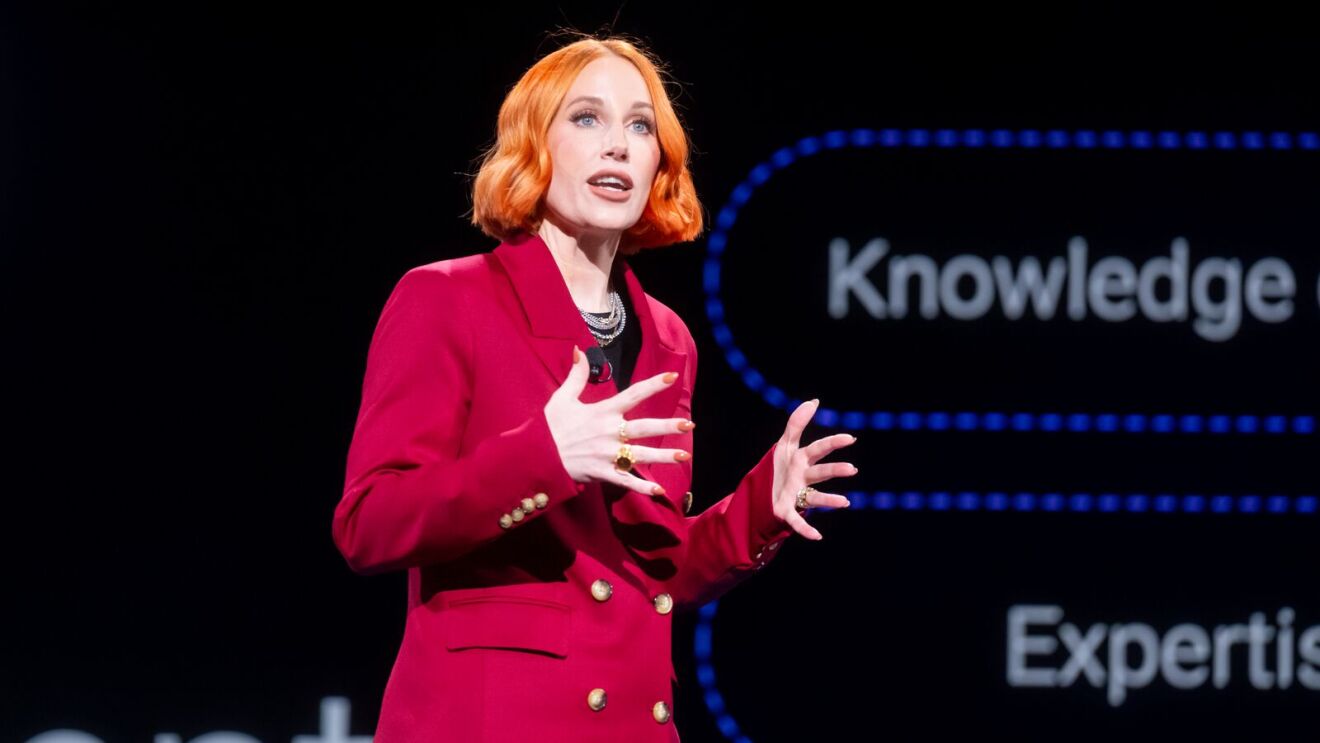 Valerie Henderson, president and CRO, Caylent
Valerie Henderson, president and CRO, CaylentCloud consulting company Caylent shared its work with Life360, a location sharing and security app, to support Life360’s mission to keep people safe. And representatives from AWS partner Slalom and biotech company Bayer traced their collaboration to enhance crop science capabilities.
Looking ahead to 2025, AWS will be expanding the strategic role startups play in its partner network, with a new Specialization Program to help startups grow and scale their businesses.
December 4, 2024 3:30 PM
Sound stem separation startup wins $100,000 AWS Unicorn Tank pitch competition
A San Francisco-based startup that specializes in groundbreaking sound stem separation technology took the top prize at the AWS Unicorn Tank pitch competition at re:Invent this afternoon.
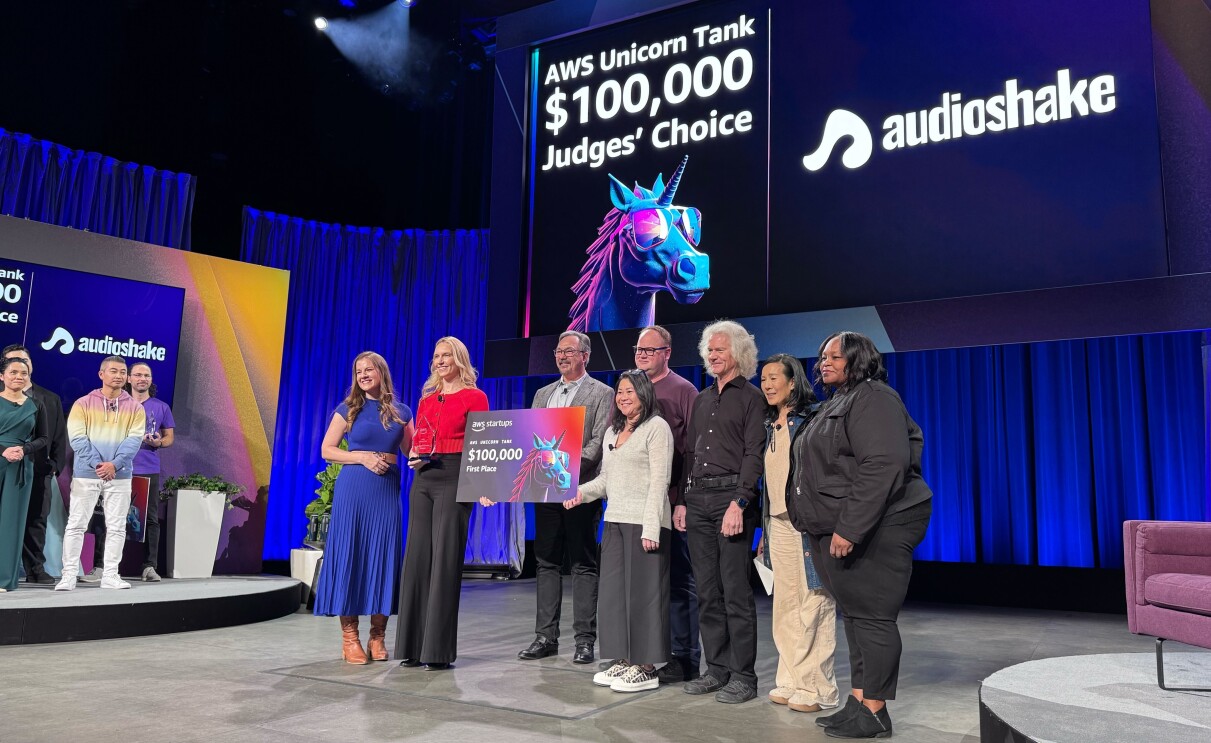
AudioShake, which uses AI to recognize different components in a piece of audio and then isolates the sound stems so they can be used for new purposes, was one of eight startups pitching their cutting-edge generative AI ideas to a panel of investors, AI pioneers, and industry leaders.
The competition runner up, voted by the re:Invent audience, was Qodo—a startup that’s building a coding platform for debugging—which walked away with $25,000.
The six other participants were Splash Music, Culminate, Jam & Tea Studios, Unravel Carbon, HeroGuest, and Capitol A.
All eight startups are part of a broader group of 80 from around the world selected by AWS to participate in the AWS Generative AI Startup Accelerator, a global 10-week hybrid program designed to support and propel the next wave of generative AI startups. Each startup receives up to $1 million in AWS credits and has the chance to learn from AWS, as well as program partners such as NVIDIA and Mistral AI.
December 4, 2024 2:19 PM
From highly realistic video to simplified mortgages: how AWS customers are transforming industries with generative AI
Three AWS customers joined Swami Sivasubramanian on stage during his re:Invent keynote Wednesday to share how their generative AI journeys are powered by AWS.
01 / 02
Autodesk revolutionizes 3D design with AWS-powered generative AI
Autodesk, a leader in design and make technology, is revolutionizing the industry with cutting-edge 3D generative AI powered by AWS services. CTO Raji Arasu shared how Autodesk is developing unique generative AI foundation models to address complex challenges in design and creation.
At the forefront of this innovation is Project Bernini, Autodesk’s billion-parameter model that processes diverse inputs like text, sketches, and voxels to generate 2D and 3D CAD geometry. To handle the massive scale of data involved—from individual building designs to entire city developments—Autodesk leverages AWS services including Amazon DynamoDB, EMR, EKS, Glue, and Amazon SageMaker. These tools have dramatically improved Autodesk’s AI development process, cutting foundation model development time in half and increasing AI productivity by 30%.
Luma AI’s Ray 2 model brings real-time video generation to Amazon Bedrock
Luma AI, a pioneer in visual intelligence, is revolutionizing the field of AI-generated video with its groundbreaking model, Luma Ray 2, soon to be available on Amazon Bedrock. CEO Amit Jain shared how the model creates highly realistic, minute-long videos with unprecedented character and story consistency, all at real-time speeds. “It’s like seeing your thoughts appear in front of you as you imagine them,” Jain said.
Trained on approximately 1,000 times more data than even the largest language models, Luma Ray 2 leverages Amazon SageMaker HyperPod for its intensive computational needs. This collaboration is set to bring Luma’s advanced creative AI capabilities to AWS customers worldwide, enabling new possibilities in film, design, and entertainment industries.
AWS Bedrock fuels Rocket Companies’ mission to simplify mortgage process
Rocket Companies CTO Shawn Malhotra shared how the company has developed an AI-driven platform, powered by Amazon Bedrock, which is transforming the traditionally stressful homeownership journey. At the heart of this transformation is an AI-powered chat agent that guides clients throughout their homebuying journey, handling the 70% of interactions autonomously and making clients three times more likely to close a loan. This allows Rocket’s team to focus on addressing more personal questions and delivering a human-centric experience. The AI system, built on AWS, assists with everything from document processing to answering complex questions about mortgage documentation, significantly reducing resolution times for client requests.
December 4, 2024 11:07 AM
AWS announces powerful new capabilities for Amazon Bedrock and biggest expansion of models to date
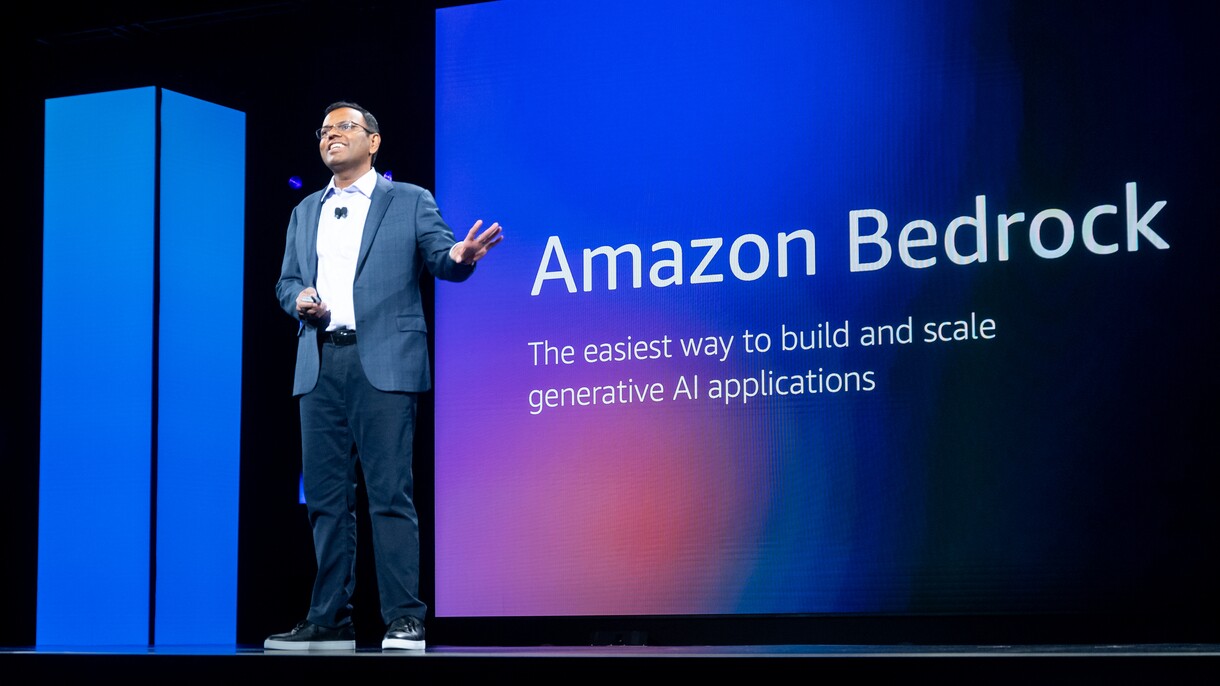 Dr. Swami Sivasubramanian, vice president of AI and Data at AWS
Dr. Swami Sivasubramanian, vice president of AI and Data at AWSDuring his re:Invent keynote Wednesday, Swami Sivasubramanian, vice president of AI and Data at AWS, announced a range of new innovations for Amazon Bedrock—a fully managed service for building and scaling generative artificial intelligence (AI) applications with high-performing foundation models—that will give customers even greater flexibility and control to build and deploy production-ready generative AI faster. The innovations all reinforce AWS’s commitment to model choice, optimize how inference is done at scale, and help customers get more from their data. They include:
- The broadest selection of models from leading AI companies
- Access to more than 100 popular, emerging, and specialized models with Amazon Bedrock Marketplace
- New Amazon Bedrock capabilities to help customers more effectively manage prompts at scale
- Two new capabilities for Amazon Bedrock Knowledge Bases
- New Amazon Bedrock Data Automation
Amazon Bedrock Marketplace is available today. Inference management capabilities, structured data retrieval and GraphRAG in Amazon Bedrock Knowledge Bases, and Amazon Bedrock Data Automation are all available in preview. Models from Luma AI, poolside, and Stability AI are coming soon.
To learn more, visit: the AWS News Blog: Amazon Bedrock Marketplace, prompt caching and Intelligent Prompt Routing, and data processing and retrieval capabilities.
December 4, 2024 10:14 AM
New $100 million AWS education initiative to support underserved learners

Amazon is committing up to $100 million in cloud credits to help qualifying education organizations build or scale digital learning solutions for learners from underserved and underrepresented communities.
Over the next five years, the new AWS Education Equity Initiative will provide eligible organizations worldwide, including nonprofits, social enterprises, and governments, with cloud computing credits, so they can take advantage of AWS's cloud and AI services to build innovations that can expand access to education and development opportunities to underserved learners. It will also offer technical expertise from AWS's Solution Architects who can help them with architectural guidance, best practices for responsible AI implementation, and ongoing optimization support.
This comprehensive approach will ensure that organizations can make the most of AWS services to ensure learners from all backgrounds have equal access to life-changing opportunities.
December 4, 2024 9:40 AM
New Amazon Bedrock Data Automation
AWS announced Amazon Bedrock Data Automation to help customers automatically extract, transform, and generate data from unstructured content at scale using a single API. This new capability can quickly and cost effectively extract information from documents, images, audio, and videos and transform it into structured formats for use cases like intelligent document processing, video analysis, and RAG. It can also generate content using predefined defaults, like scene-by-scene descriptions of video stills or audio transcripts, or customers can create an output based on their own data schema that they can then easily load into an existing database or data warehouse. Through an integration with Knowledge Bases, Amazon Bedrock Data Automation can also be used to parse content for RAG applications, improving the accuracy and relevancy of results by including information embedded in both images and text. Amazon Bedrock Data Automation provides customers with a confidence score and grounds its responses in the original content, helping to mitigate the risk of hallucinations and increasing transparency.
Amazon Bedrock Data Automation is available in preview.
December 4, 2024 9:39 AM
New capabilities for Amazon Bedrock Knowledge Bases
Amazon Bedrock Knowledge Bases is a fully managed capability that makes it easy for customers to customize foundation model responses with contextual and relevant data using retrieval augmented generation (RAG). While Knowledge Bases already makes it easy to connect to data sources like Amazon OpenSearch Serverless and Amazon Aurora, many customers have other data sources and data types they would like to incorporate into their generative AI applications. That is why AWS is adding two new capabilities to Knowledge Bases.
Support for structured data retrieval accelerates generative AI app development
Knowledge Bases provides one of the first managed, out-of-the-box RAG solutions that enables customers to natively query their structured data where it resides for their generative AI applications. This capability helps break data silos across data sources, accelerating generative AI development from over a month to just days. Customers can build applications that use natural language queries to explore structured data stored in sources like Amazon SageMaker Lakehouse, Amazon S3 data lakes, and Amazon Redshift. With this new capability, prompts are translated into SQL queries to retrieve data results. Knowledge Bases automatically adjusts to a customer’s schema and data, learns from query patterns, and provides a range of customization options to further enhance the accuracy of their chosen use case.
Support for GraphRAG generates more relevant responses
Knowledge graphs allow customers to model and store relationships between data by mapping different pieces of relevant information like a web. These knowledge graphs can be particularly useful when incorporated into RAG, allowing a system to easily traverse and retrieve relevant parts of information by following the graph. Now, with support for GraphRAG, Knowledge Bases can enable customers to automatically generate graphs using Amazon Neptune, AWS’s managed graph database, and link relationships between entities across data, without requiring any graph expertise. Knowledge Bases makes it easier to generate more accurate and relevant responses, identify related connections using the knowledge graph, and view the source information to understand how a model arrived at a specific response.
Structured data retrieval and GraphRAG in Amazon Bedrock Knowledge Bases are available in preview. Learn more about data processing and retrieval capabilities.
December 4, 2024 9:32 AM
New Amazon Bedrock capabilities to help customers more effectively manage prompts at scale
When selecting a model, developers need to balance multiple considerations, like accuracy, cost, and latency. Optimizing for any one of these factors can mean compromising on the others. To balance these considerations when deploying an application into production, customers employ a variety of techniques, like caching frequently used prompts or routing simple questions to smaller models. However, using these techniques is complex and time-consuming, requiring specialized expertise to iteratively test different approaches to ensure a good experience for end users. That’s why AWS is adding two new capabilities to help c

